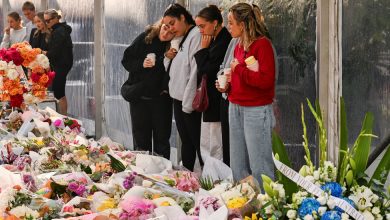
After a Quiet August, Hurricane Forecasters Are Monitoring a Potential Storm
An unusually quiet Atlantic hurricane season could end by the Labor Day weekend, with meteorologists monitoring a disturbance that could gather momentum as it moves west.
As of Tuesday, there was an area of cloudiness and thunderstorms about 875 miles east of the Lesser Antilles in the Caribbean Sea, the National Hurricane Center said. The area of low pressure was expected to develop over the next several days and become a tropical depression later this week.
The chances that the storm would come close to the United States were “very low” at this time, said Maria Torres, a spokeswoman for the National Hurricane Center. “We will have to monitor the situation in the next couple of days to see where it develops in order to know more if it remains at sea.”
Forecasters said the disturbance had a 50 percent chance of becoming a tropical system within the next two days and an 80 percent chance within the next five days. It was forecast to move west and then shift west-northwest toward the northern Leeward Islands in the Caribbean, but its path could shift ahead of the holiday weekend.
If the disturbance becomes Tropical Storm Danielle, it would be the end of a relatively quiet summer, with just three other named storms. Alex, which formed in early June, caused flooding across South Florida and killed at least three people in Cuba. Bonnie tore across Central America as a tropical storm in early July and briefly became the first major hurricane of the Pacific hurricane season. Colin, the most recent named storm, formed over the Fourth of July weekend, drenching the Carolinas.
This month has been unusually quiet, with no named storms occurring so far. The last time there were no named storms in August was in 1997, and before that, it was 1961.
The Atlantic hurricane season runs through the end of November, with most hurricanes and tropical storms forming between mid-August and October.
Federal scientists said this month that conditions in the Atlantic basin indicated that this year’s season would be an “above normal” one, with 14 to 20 named storms and up to 10 of those strengthening into hurricanes. If those predictions play out, this will be the seventh consecutive year with an above-normal season.
The links between hurricanes and climate change have become more apparent with time.
Data shows that hurricanes have become stronger worldwide during the past four decades. As the burning of fossil fuels like oil and gas causes the planet to warm, powerful storms are likely to become more frequent, though the overall number of storms could drop as stronger wind shear keeps weaker storms from forming.
Hurricanes are also becoming wetter because there is more water vapor in the warmer atmosphere, and rising sea levels are contributing to higher storm surge — the most destructive element of tropical cyclones.
Ms. Torres, the National Hurricane Center spokeswoman, said residents should not lower their guards, even though there have been few major storms so far this year.
“Be vigilant, as things can change, and the season is not over yet,” she said. One storm is enough to make up a season, she added, citing Hurricane Andrew, which devastated South Florida and Louisiana in 1992, an otherwise quiet year. “We still have many months to go in hurricane season.”
Jenny Gross contributed reporting.



